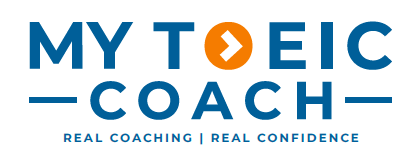TOEIC Part 7 Strategy: Conquer the Clock, Master Comprehension
Part 7 is where many test takers feel the pressure most — the longest texts, the highest number of questions, and the clock ticking down. But with clear reading patterns and smart time control, you can work through the section confidently and finish strong.
🎯 What Part 7 Tests
54 questions across single, double, and triple passages.
Text types include emails, memos, schedules, reviews, reports, and ads.
Measures your ability to:
Identify key details quickly.
Follow the logical flow of a text.
Process accurately under tight time limits.
⏱️ Step 1: Beat the Speed Trap
Skim for the main idea — don’t read every word.
Answer easy wins first — vocabulary or specific details.
Save “NOT” / “EXCEPT” questions until you’ve seen the passage fully.
Keep pace — around 1.5 minutes per question.
Practise under real time limits so your pace becomes automatic.
🔍 Step 2: Lock in the Details
Scan for keywords from the question.
Mark names, dates, and numbers in the text.
Remember: questions usually follow the order of the passage.
Confirm answers from the text, not just from memory.
Use elimination to narrow your choices fast.
📚 Step 3: Handle Vocabulary in Context
Guess meaning from surrounding sentences, not from a dictionary.
Watch for trap words — absolute terms like always or never.
Be aware of similar-looking words that differ in meaning or time (lead vs. lead, read present vs. past).
Think directly in English — avoid full translations to save time.
🗂️ Step 4: Know the Question Types
Detail — who, what, where, when, how many.
Inference — implied, suggested, most likely.
Purpose — why the writer included something or sent it.
Use signal words — however, therefore, because — to track shifts in meaning.
For triple passages, compare documents carefully before answering.
🌐 Step 5: Keep the Big Picture
Pay attention to repeated ideas or themes — they’re often important.
Don’t panic over a hard question — move on and return later.
Build familiarity with different document types to reduce mental fatigue.
Mini Q&A
Q: I always run out of time.
A: You need stronger reading decision patterns, not just faster reading.
Q: I read the text but don’t understand the questions.
A: Read the questions first to know what you’re looking for.
Q: Do I need huge vocabulary knowledge?
A: Context skills matter more than knowing every word.
Final Word
Part 7 can feel overwhelming, but with a clear plan for time, details, and question types, you can work through it calmly and finish on time.
For more strategies and resources to boost your TOEIC reading speed and accuracy, visit the English Library Collection and start mastering Part 7 with confidence.

